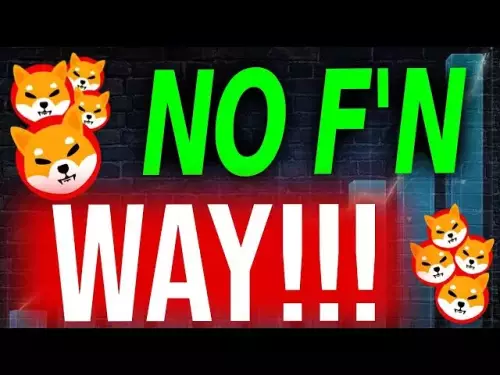-
 Bitcoin
Bitcoin $112100
0.77% -
 Ethereum
Ethereum $4474
3.78% -
 XRP
XRP $2.851
0.46% -
 Tether USDt
Tether USDt $1.000
0.01% -
 BNB
BNB $856.0
0.45% -
 Solana
Solana $209.3
1.04% -
 USDC
USDC $0.9998
-0.02% -
 Dogecoin
Dogecoin $0.2216
3.68% -
 TRON
TRON $0.3420
1.19% -
 Cardano
Cardano $0.8415
1.56% -
 Chainlink
Chainlink $23.79
1.74% -
 Hyperliquid
Hyperliquid $46.03
3.38% -
 Ethena USDe
Ethena USDe $1.001
0.04% -
 Sui
Sui $3.399
2.98% -
 Bitcoin Cash
Bitcoin Cash $599.8
3.03% -
 Stellar
Stellar $0.3628
-0.44% -
 Avalanche
Avalanche $25.24
4.29% -
 Cronos
Cronos $0.2809
9.58% -
 Hedera
Hedera $0.2203
0.68% -
 UNUS SED LEO
UNUS SED LEO $9.526
-0.04% -
 Litecoin
Litecoin $112.7
0.88% -
 Toncoin
Toncoin $3.188
0.41% -
 Shiba Inu
Shiba Inu $0.00001253
0.80% -
 Polkadot
Polkadot $3.891
2.61% -
 Uniswap
Uniswap $9.732
2.10% -
 Bitget Token
Bitget Token $4.971
-2.70% -
 Dai
Dai $0.0000
0.01% -
 World Liberty Financial
World Liberty Financial $0.2148
-8.62% -
 Aave
Aave $327.8
3.77% -
 Monero
Monero $270.0
1.47%
What is a "Slippery" NFT floor?
The NFT floor price represents the lowest listing in a collection and serves as a key indicator of market demand, influenced by rarity, utility, and investor sentiment.
Sep 04, 2025 at 11:54 am
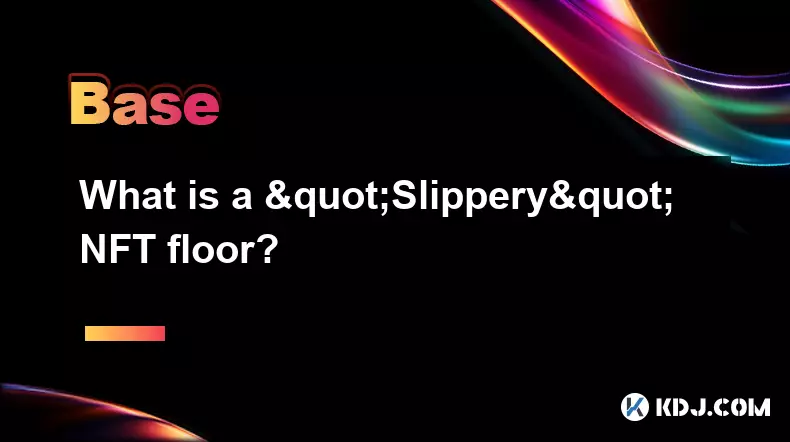
Understanding the Concept of NFT Floor Price
1. The floor price of an NFT collection refers to the lowest listed price for any item within that collection on a marketplace. This metric is widely used by investors and collectors to gauge the entry-level cost of acquiring a piece from a particular project. It acts as a benchmark reflecting the overall health and demand for the collection. A stable or rising floor price often signals strong community support and market confidence.
2. Marketplaces like OpenSea or LooksRare display NFTs in ascending order based on price, making it easy to identify the cheapest available token. However, the presence of a single low-priced listing does not always mean the floor is secure. If that listing sells, the next lowest price becomes the new floor, which could be significantly higher. This dynamic nature makes the floor price a fluid indicator rather than a fixed value.
3. The floor price is influenced by various factors including rarity distribution, utility, community engagement, and broader market sentiment. Collections with strong roadmaps, active development teams, and exclusive benefits for holders tend to maintain more resilient floors. Conversely, projects lacking transparency or long-term vision often see rapid declines in their floor prices.
What Makes an NFT Floor 'Slippery'?
1. A 'slippery' NFT floor describes a situation where the lowest price in a collection is unstable and prone to sudden drops. This instability arises when there are multiple sellers undercutting each other, often in panic during bearish market conditions. The term 'slippery' captures the idea that the floor can collapse quickly, much like losing footing on a wet surface.
2. One key sign of a slippery floor is a cluster of listings just above the current floor price. For example, if the floor is 0.8 ETH but there are ten NFTs listed at 0.81, 0.82, and 0.83 ETH, the floor can drop sharply the moment one seller decides to relist at 0.79 ETH to gain priority visibility. This triggers a chain reaction as others follow suit to stay competitive.
3. Another factor contributing to slipperiness is low trading volume. When few buyers are active, even minor sell pressure can overwhelm demand. A single large holder, often referred to as a 'whale,' dumping multiple assets can crash the floor overnight. In such cases, the absence of organic demand makes recovery difficult.
4. Collections with high supply and low differentiation between individual NFTs are more susceptible to slippery floors. When tokens are perceived as largely interchangeable, buyers focus solely on price, leading to aggressive undercutting. This commoditization undermines the perceived value of the entire collection.
Impact of Market Psychology on Floor Stability
1. Investor behavior plays a crucial role in determining whether a floor holds or slips. Fear of missing out (FOMO) can inflate prices during bullish trends, but fear, uncertainty, and doubt (FUD) can trigger mass sell-offs. Social media sentiment, influencer commentary, and project announcements can amplify these emotions, leading to rapid shifts in floor dynamics.
2. The perception of a 'supporting floor' — where key holders commit to buying at certain price levels — can temporarily stabilize a collection. However, if this support is not backed by actual buying activity, the illusion can collapse quickly. Once trust erodes, sellers may rush to exit, accelerating the decline.
3. Some communities organize coordinated efforts to 'floor sweep' — purchasing all listings at or near the floor price to prevent further drops. While this can provide short-term relief, it requires substantial capital and sustained commitment. Without genuine demand, such interventions may only delay an inevitable correction.
Rarity, Utility, and Their Role in Floor Resilience
1. NFTs with verifiable rarity traits, such as unique attributes or low serial numbers, often trade at significant premiums. These high-value items can anchor a collection's perceived worth, even if the base floor slips. However, if the majority of the collection lacks distinguishing features, the overall floor remains vulnerable.
2. Utility enhances floor stability by providing tangible reasons to hold rather than sell. Examples include access to exclusive events, staking rewards, or integration into gaming ecosystems. Projects that deliver consistent utility tend to retain holders during downturns, reducing sell pressure.
3. Transparency in roadmap execution strengthens trust and discourages panic selling. When holders see progress — such as product launches, partnerships, or community milestones — they are more likely to maintain their positions. Regular communication from the team helps mitigate uncertainty that could otherwise lead to floor erosion.
Frequently Asked Questions
What causes an NFT floor to drop suddenly?Sudden drops occur when multiple sellers list below the current floor, often during market downturns. A single whale selling several NFTs at discounted prices can also trigger a cascade of lower listings as others try to remain competitive.
Can a low floor price indicate a good investment opportunity?Not necessarily. A low floor might reflect weak demand, poor project fundamentals, or oversaturation. Buyers should assess the collection’s utility, team activity, and community strength before assuming a low price equals value.
How do NFT marketplaces influence floor price visibility?Marketplaces sort listings by price, making the floor highly visible. Their user interfaces prioritize the cheapest options, increasing pressure on sellers to undercut each other. Some platforms also highlight volume and floor changes, amplifying market reactions.
Is it possible for a collection to recover after a floor crash?Yes, recovery depends on renewed demand, effective team intervention, or new utility releases. Historical examples show that collections with strong narratives and active communities can rebound, though it often takes time and strategic execution.
Disclaimer:info@kdj.com
The information provided is not trading advice. kdj.com does not assume any responsibility for any investments made based on the information provided in this article. Cryptocurrencies are highly volatile and it is highly recommended that you invest with caution after thorough research!
If you believe that the content used on this website infringes your copyright, please contact us immediately (info@kdj.com) and we will delete it promptly.
- C2 Blockchain's DOG Coin Gambit: Bridging Memes and Bitcoin Assets
- 2025-09-04 12:25:13
- Crypto Treasury, Startup Strategies, & Investment Opportunities: A New Yorker's Take
- 2025-09-04 09:05:12
- Moca Network's $20M Portfolio: A New Era for Community Rewards?
- 2025-09-04 09:05:12
- XDC Network Price Prediction 2026: Is XDC the Dark Horse of Crypto?
- 2025-09-04 08:25:15
- BullZilla Roar, Bonk Stablecoin, and Solana Alpenglow: The Evolution of Meme Coins
- 2025-09-04 09:25:17
- TRON, GDP Data, and the Commerce Department: A Blockchain Milestone
- 2025-09-04 09:25:17
Related knowledge

What is "backtesting" a crypto trading strategy?
Sep 03,2025 at 10:55am
Understanding Backtesting in Crypto TradingBacktesting is the process of evaluating a trading strategy by applying it to historical market data. Trade...

What is a "crypto trading bot" and do they work?
Sep 02,2025 at 04:19pm
Understanding Crypto Trading Bots1. A crypto trading bot is a software application designed to automate the process of buying and selling cryptocurren...

What is a "copy trading" platform?
Sep 02,2025 at 07:00pm
Understanding Copy Trading in the Cryptocurrency Space1. A copy trading platform allows users to automatically replicate the trades of experienced inv...
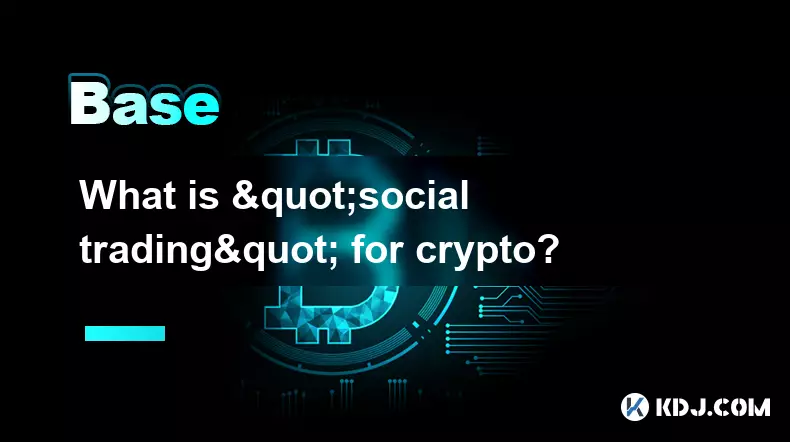
What is "social trading" for crypto?
Sep 03,2025 at 09:00pm
Understanding Social Trading in the Cryptocurrency Space1. Social trading refers to a method where investors observe, follow, and automatically replic...
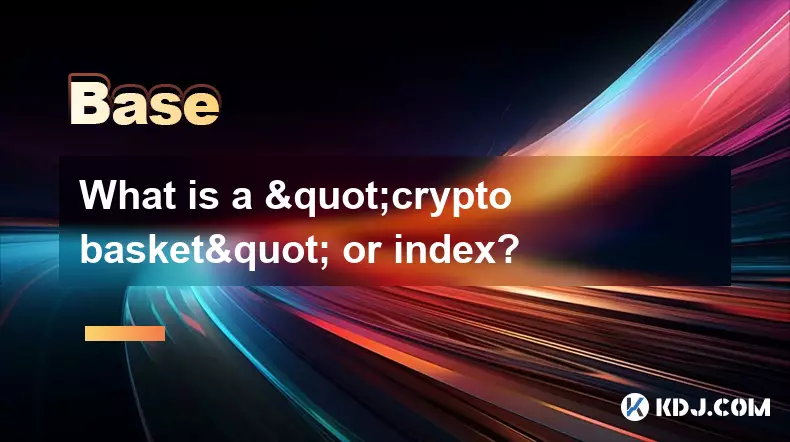
What is a "crypto basket" or index?
Sep 03,2025 at 07:01am
Understanding Crypto Baskets and Their Role in Digital Asset Investment1. A crypto basket refers to a curated collection of multiple cryptocurrencies ...
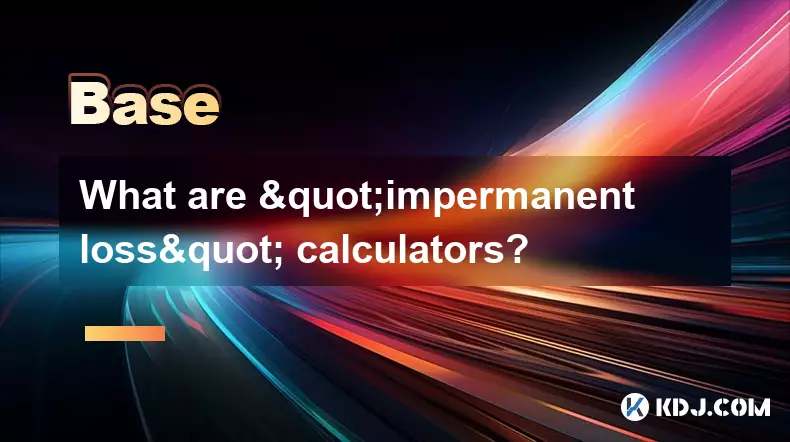
What are "impermanent loss" calculators?
Sep 03,2025 at 12:00pm
Understanding Impermanent Loss in Decentralized Finance1. Impermanent loss is a phenomenon that affects liquidity providers in decentralized exchanges...

What is "backtesting" a crypto trading strategy?
Sep 03,2025 at 10:55am
Understanding Backtesting in Crypto TradingBacktesting is the process of evaluating a trading strategy by applying it to historical market data. Trade...

What is a "crypto trading bot" and do they work?
Sep 02,2025 at 04:19pm
Understanding Crypto Trading Bots1. A crypto trading bot is a software application designed to automate the process of buying and selling cryptocurren...

What is a "copy trading" platform?
Sep 02,2025 at 07:00pm
Understanding Copy Trading in the Cryptocurrency Space1. A copy trading platform allows users to automatically replicate the trades of experienced inv...

What is "social trading" for crypto?
Sep 03,2025 at 09:00pm
Understanding Social Trading in the Cryptocurrency Space1. Social trading refers to a method where investors observe, follow, and automatically replic...

What is a "crypto basket" or index?
Sep 03,2025 at 07:01am
Understanding Crypto Baskets and Their Role in Digital Asset Investment1. A crypto basket refers to a curated collection of multiple cryptocurrencies ...

What are "impermanent loss" calculators?
Sep 03,2025 at 12:00pm
Understanding Impermanent Loss in Decentralized Finance1. Impermanent loss is a phenomenon that affects liquidity providers in decentralized exchanges...
See all articles























